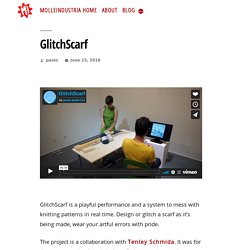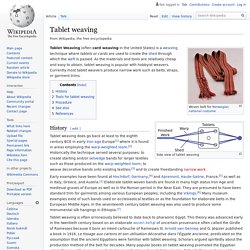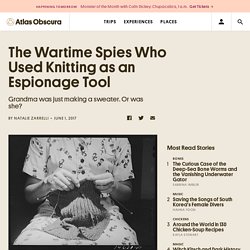

Rafaël Rozendaal - Weavings. Rustica : revue universelle de la campagne : jardinage, basse-cour, chasse et pêche, élevage, sports, bricolage, TSF, romans. Secret code summary – String Geekery. A while ago I came up with an idea for turning Dewey Decimal library catalog numbers into knitted lace (hi, I’m a geeky librarian :D).

I’m still working on that shawl, but I’ve expanded my thoughts to general encoding of words and numbers into grids, and then knitting. This is a summary of my very long blog posts about this. First, either pick a number you like or turn your words into numbers somehow. You can assign each letter a number from 01-26 (I prefer to convert mine into base 6 because it tends to make a denser pattern) or use the ASCII codes or use some other method. I am particularly pleased by using Dewey Decimal numbers. Then plot those numbers out on a grid. Now you have a grid you can play with layout (be careful if you’re actually using secret code or you’ll make it indecipherable), and then turn the marked squares on the chart into knitting stitch symbols. Here’s a quick sequence for you: Peace becomes 2405010305 (using base 6). Next up: Converting words to numbers. ‘Knitting Is Coding’ and Yarn Is Programmable in This Physics Lab.
During his introductory remarks, Dr.

Reis had a vexing encounter with an intertwined microphone cord. “This is a good example of why we really care about this topic,” he said. Dr. Reis grapples with the likes of long-overhand shoelace knotting, climbing knots, basket weaving, surgical sutures, and how to pass on the art of surgical-knot craftsmanship to robots. During the session, his lab mates described how they had used a CT scan to probe the internal structure of knot filaments and the friction that arises where filaments touch. Derek Moulton, of the University of Oxford, mentioned variants of sailor’s knots, DNA and protein knots, and worms that tie themselves into knots in order to minimize dehydration.
And Thomas Plumb-Reyes, an applied physicist at Harvard, presented his research on “Detangling Hair” to a standing-room-only audience. “What is going on in tangled hair?” Shashank Markande, a Ph.D. student working with Dr. Back in February, Mr. Dr. Weaving software into core memory by hand. Sans titre. Sans titre. Chronique de Michel Field consacré au mot "défilé" - Audio Ina.fr. Electro-knit. SkyKnit: When knitters teamed up with a neural... Christy Bailey.
Cat-astrophe — kayla mattes. GlitchScarf – Molleindustria. GlitchScarf is a playful performance and a system to mess with knitting patterns in real time.

Design or glitch a scarf as it’s being made, wear your artful errors with pride. The project is a collaboration with Tenley Schmida. It was for the most part developed during a 3-day game jam at the Carnegie Mellon University Textiles Lab (the makers of the award winning embroidery game Threadsteading). This is possibly the only software that allows the creation of knitting patterns on the fly, as opposed to feeding a machine with a static image. Clara Levieuge. Tablet weaving. Side view of tablet weaving History[edit] Tablet weaving does go back at least to the eighth century BCE in early Iron age Europe[1] where it is found in areas employing the warp-weighted loom.[2] Historically the technique served several purposes: to create starting and/or selvedge bands for larger textiles such as those produced on the warp-weighted loom; to weave decorative bands onto existing textiles;[3] and to create freestanding narrow work.

Early examples have been found at Hochdorf, Germany,[4] and Apremont, Haute-Saône, France,[5] as well as in Italy, Greece, and Austria.[1] Elaborate tablet-woven bands are found in many high status Iron Age and medieval graves of Europe as well as in the Roman period in the Near East. They are presumed to have been standard trim for garments among various European peoples, including the Vikings.[6] Many museum examples exist of such bands used on ecclesiastical textiles or as the foundation for elaborate belts in the European Middle Ages.
TextileArtist.org - Be inspired to create. Stitch Library – KHG Arts. The Wartime Spies Who Used Knitting as an Espionage Tool - Atlas Obscura. During World War I, a grandmother in Belgium knitted at her window, watching the passing trains.

As one train chugged by, she made a bumpy stitch in the fabric with her two needles. Another passed, and she dropped a stitch from the fabric, making an intentional hole. Later, she would risk her life by handing the fabric to a soldier—a fellow spy in the Belgian resistance, working to defeat the occupying German force. Whether women knitted codes into fabric or used stereotypes of knitting women as a cover, there’s a history between knitting and espionage. “Spies have been known to work code messages into knitting, embroidery, hooked rugs, etc,” according to the 1942 book A Guide to Codes and Signals. Reddit.